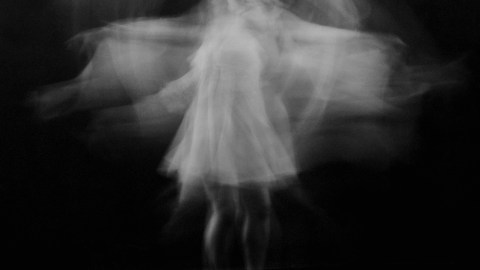Tchaikovsky’s wisdom for artists with depression

Photo credit: Alexander Krivitskiy on Unsplash
The relationship between creativity and depression entails a lengthy history, as so many of those who have been labeled “genius” were (and continue to be) plagued by bouts of sorrow, grief, and self-hatred. Among those in this category is Pyotr Ilyich Tchaikovsky, the Russian composer whose glorious symphonies have touched millions globally for the past century and a half. Now his letters are catalogued in a new book edited by Rosa Newmarch called The Life and Letters of Pyotr Ilyich Tchaikovsky.
Many of Tchaikovsky’s notes highlight his battle with melancholy, as he writes to his nephew, “There are days, hours, weeks, aye, and months, in which everything looks black, when I am tormented by the thought that I am forsaken, that no one cares for me.” But he also sees the joy and beauty in the world, saying, “I assert that life is beautiful in spite of everything!”
This give-and-take between seeing the exquisite wonder of the world beside its bleakness is a struggle not unique to Tchaikovsky and shared by many artists. It is the depth of our feeling, the detail of our gaze, the ability to see and measure the contrast of the 10,000 joys and 10,000 sorrows that feed and inform our creativity. We feel too much, too deeply, and it is at times painful. At others, glorious.
Tchaikovsky put it most brilliantly when he said, “There are many thorns, but the roses are there, too.” Creative people possess within them the poison of depression. They also possess its antidote. But how did we end up this way, and what is the scientific correlation between creativity and depression?
Whether mental illness and creativity are genetically linked is still up for debate. Kay Redfield Jamison wrote extensively about this in her 1996 book Touched With Fire and a 2015 study says creative people are 25 percent more likely to carry the genes for mental illnesses. That evidence was met by many who feel the relationship is more casual than causal, but a strong curiosity remains and the studies continue. How much is myth and romanticism? How much is science? All this has yet to be determined.
While some are interested in debating the genetics, I’m more interested in the practicalities of managing an artistic temperament and a depressive one. Tchaikovsky could avoid being swept under the tide of his dark episodes by witnessing the crisp beauty of a spring morning. I’m reminded of the Sufjan Stevens song “The Only Thing,” in which he discusses ways in which he would take his own life and the things that keep him from doing so: natural wonders like stars and sea caves and his faith in God. We use our keen observational ability to take it all in — the good and the bad.
“There are many thorns, but the roses are there, too.”
The balance is key — experiencing present joy can paint hints of color and hope upon even the dreariest and most confounding moments. As Albert Camus said, “In the depths of winter I finally learned there was in me an invincible summer.” And whether you are an artist or not, whether you suffer from depression or not, those words are understood. It is our tremendous resilience as people that carries us through difficult times. There are thorns, yes. But there are roses, too.





